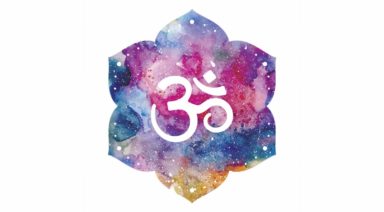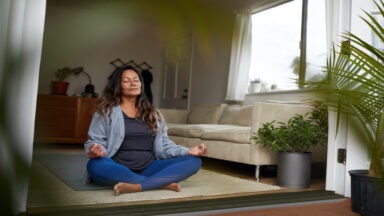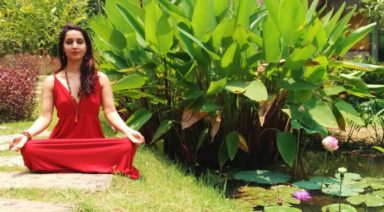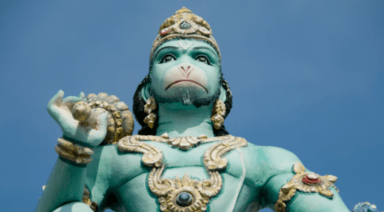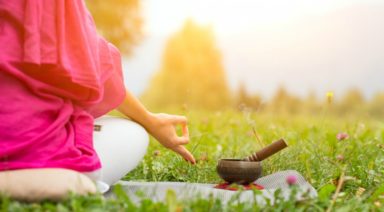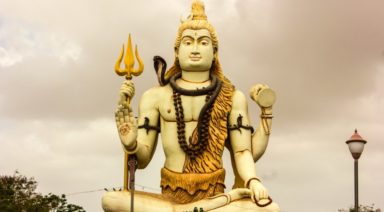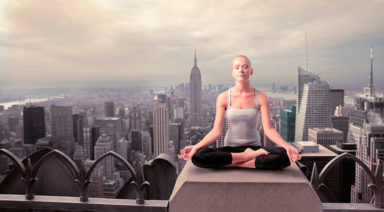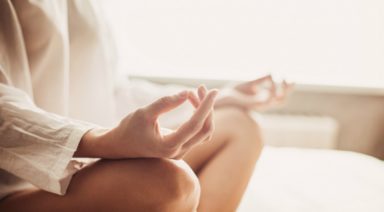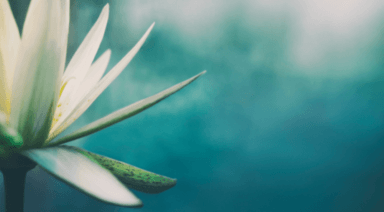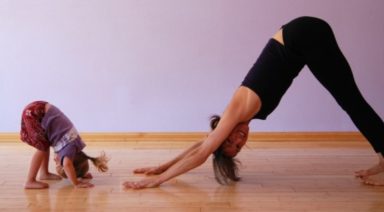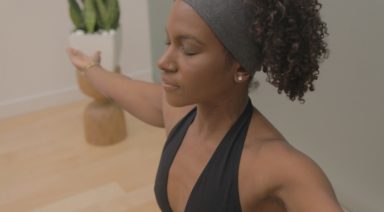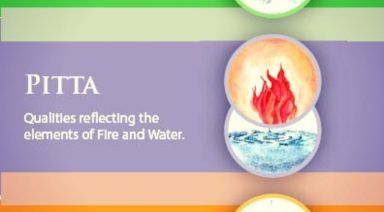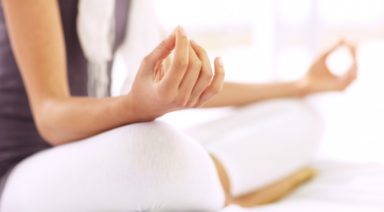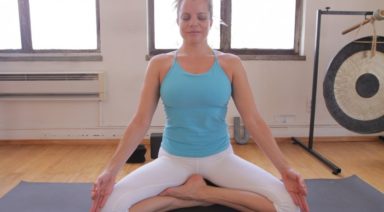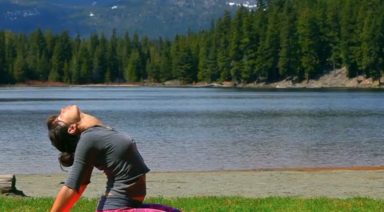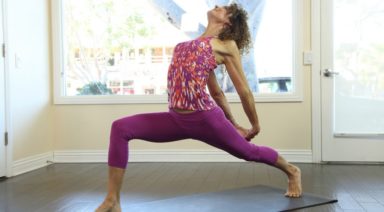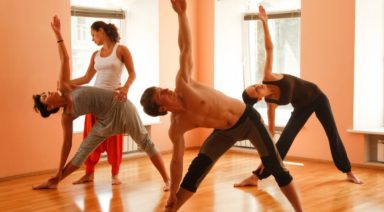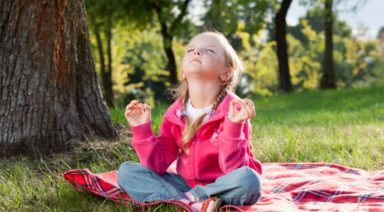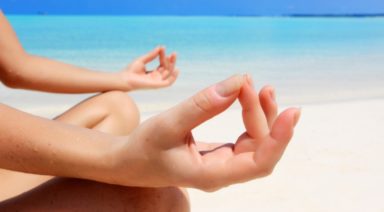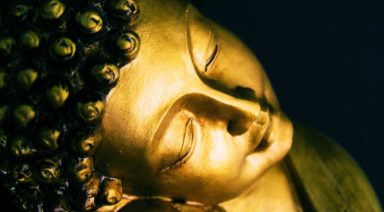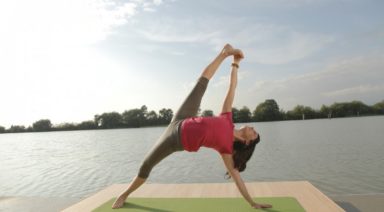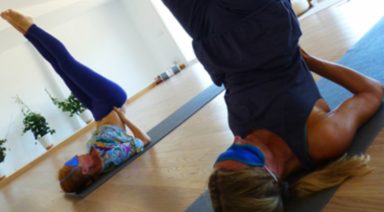What is Tantra Yoga?
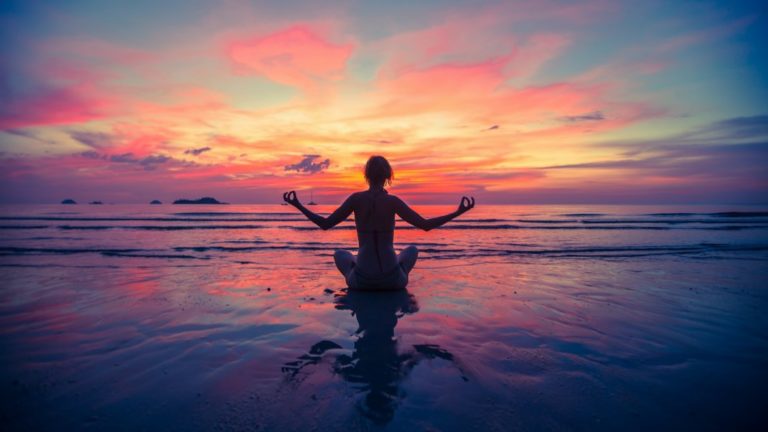
If the word Tantra conjures up scenes of sexuality, you’re not alone. The introduction of Tantric practices in the West has inadvertently become identified with a practice that’s laced with nudity, sexuality, and occasionally, promiscuity.
The truth is, Tantra may enhance your sex life, but only by deepening your connection to your energy and your body first. Although Tantric practices are founded on the principle of intimacy, intimacy is not purely physical. It’s the act of connecting so deeply that you feel as if you are getting a glimpse into your and perhaps another’s soul.
I’ve heard it described as “into me I see” based on the premise that we must gain an awareness of our true selves before we can forge the path of union with others.
What’s the point of Tantra Yoga?
The purpose of Tantra Yoga, is to further emotional wellbeing, aiding spiritual and physical health.
The exploration of the subtle energies within the body and their connection to the universe provide the opportunity to understand the purpose of life and the principles of union in new dimensions.
Rod Stryker, a prominent teacher of Tantra Yoga, describes the intention of Tantra Yoga, “(it) shows us what is blocking us from thriving and offers techniques that will help us attain spiritual and material prosperity.” Hence the goals of the Tantric practices are to enable us to prosper, to thrive and to merge the spiritual world and the material world into one.
What is Tantra Yoga?
The word Tantra means, “to weave or expand.” The root of the word yoga is “yuj” which means, “union.” Similar to some of the other 8 Forms of Yoga, Tantra Yoga blends elements of Raja, Bhakti, Karma, Kundalini, and Hatha practices. What distinguishes it from others is that it also weaves dynamics of other mystical practices as well such as: astrology, Ayurveda, crystals, and gemology to name a few. In utilizing these aspects, the Tantric practice aims to expand beyond perceived limitations of yogic philosophy and the asanas.
The comprehensive approach of Tantra Yoga incorporates conscious breathing practices, pranayama, and meditation, and may be practiced individually or in partnership with another. In both practices, the relationship between the micro (self) and the macro (others) is enhanced.
Vinyasa, as a moving meditation through postures, or asanas, also may be practiced partnering, as a blending of energies or as a sole practitioner. The aim is the same: to gain awareness of our strengths and weaknesses, the places where we resist union with ourselves and others, and cultivate the ability to consciously respond rather than unconsciously react to both our fears and desires. When that occurs, we reach a state of eternal bliss.
Five Tantra Yoga Practices
1. Peace Pose with Pranayam, Conscious Breathing
Begin in a cross-legged seated position, Sukhasana, or peace pose. Gaze down; if knees are higher than hip creases, sit on a yoga block or rolled up yoga mat to elevate the spine.
For solo practice, place hands in gyan mudra (also referred to as jnana mudra in some practices) with the tip of the index finger touching the tip of the thumb, extending out the other three fingers with the palms facing up and resting on knees or thighs. Gyan mudra, a yogic shape for the hands, is considered the prime mudra with many health and grounding benefits.
If practicing with a partner, sit back to back in peace pose, sukhasana. You’ll want to align your spines: start by scooting your seats as close to one another as possible. Option to use prithvi mudra, tips of the ring fingers touching the tips of the thumbs, remaining three fingers outstretched but relaxed. This mudra creates a circuitry igniting the heart meridian, or line of energy that extends from the ring fingers, extends up through the arms and confluences at heart center in both the front and backside of the chest.
Take five full breaths, focusing on smoothing out the length of the inhale to match the same length on the exhale.
2. Sun Salutations, Surya Namaskar
Start in mountain pose (tadasana/urdhva hastasana), standing at the top of your yoga mat. As an individual practice, you may like to practice facing a full-length mirror. In a partner practice, you could either practice facing one another or side by side. Bring palms to meet at heart center in anjali mudra (prayer gesture) or place one hand on your heart, and one on your partner’s heart. Take five deep breaths.
Extend arms overhead, mountain pose, then bow forward, keeping your heart open and gaze forward, and release your head into a forward fold (uttanasana). Bring hands to shins or thighs and lengthen through your spine for a halfway lift (ardha uttanasana). Repeat three times.
3. Modified Side Plank/ Partner Modified Side Plank Pose
Start in table pose, wrists aligned under shoulders, hands spread wide, and hips stacked over knees. For partner modified plank pose, you can lightly touch the crown of the head with one another while in table. Then extend your right shins behind you, toes curled under as you root right hand into the mat and open your chests towards one another.
For an individual practice, bring your left hand to rest over your heart as you stack your left shoulder over right so your heart is wide open. Your hips are also stacked creating a beautiful opening for what are considered our more vulnerable energetic centers: hips and hearts. In partner practice, connect left palms overhead. Enjoy five breaths. Return to table and then switch sides.
4. Partner Peace Pose, Entwined Sukhasana
Come into a loose, cross-legged position (typically the larger person in sukhasana first). Your partner then sits on your thighs and crosses their ankles behind your back. Touch your third eye centers (space between the eyebrows) as you both lengthen through your spines. You may choose to close your eyes or gaze lightly into each other’s eyes as you inhale and exhale through the nose. Take five breaths, allowing a natural synchronicity of breath, with your palms resting on the backside of your partner’s heart. Surrender to the intimate experience of both your and your partner’s heartbeat.
5. Child’s Pose (Balasana), Partner Child’s Pose
Bring your knees wide to the edges of your mat, fold forward resting your forehead on the mat, arms extended overhead but resting on the mat. (If knees are sensitive, you can place the folded edges of a blanket behind your knees before folding forward or rest your seat and perhaps forehead on yoga blocks.) If shoulders allow, bring your palms to touch in prayer, symbolic of union with all aspects of yourself.
For partner child’s pose, assume the same shape described above, with heads pointed towards one another. With arms outstretched, you can place your left palm down, and your palm up to connect with your partner’s palms. It’s said that our hands are an extension of our hearts. Envision your inhale emerging from your left palm, breathing in the essence of your partner, and exhaling through your right palm, sharing your essence with your partner.
For a more advanced practice, presuming both partners have healthy knees and spines, you may like to have one partner (typically the larger partner) stay in child’s pose, and the other, sit facing the opposite direction, on the low back of the partner in child’s pose. Slowly, keeping weight in your feet, begin to lower down, using the support of hands on the mat alongside the bottom partner’s hips. Eventually, lower your spine to align with the partner in child’s pose, and relax arms alongside, or extend your arms overhead, sliding palms underneath your partner’s palms.
Stay in close communication with your partner in child’s pose to ensure that each of the actions feels safe and available in their body.
Expand Your Capacity For Intimacy
If you’re practicing Tantra Yoga on your own or with a partner, you’re expanding your capacity for intimacy and union. With practice, we’re able to get up close and intimate with the beliefs and behaviors that hold us back from the intimacy we desire. In addition, Tantric techniques are provided to evolve beyond these barriers so that each and every one of us may thrive and prosper.
Nada Yoga: The Yoga of Sound
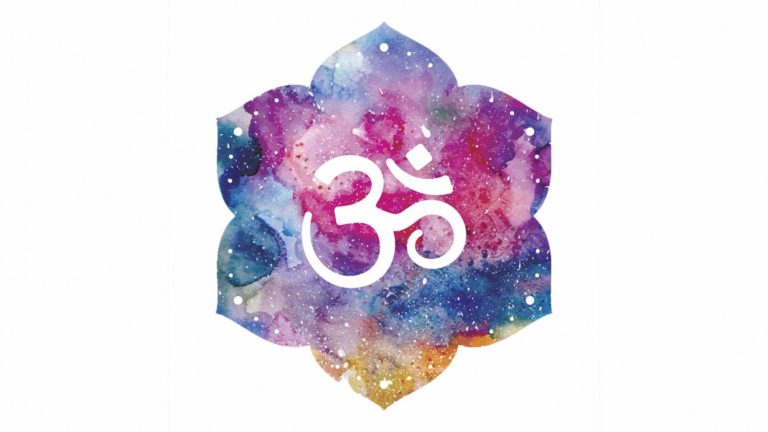
The first time I went to India, little did I know that my life was going to completely change. I know, many people come back from India saying they transformed. It happened to me, too.
At that time, I was a singing student at the university in Montreal and was feeling blocked. My voice was weak and so was my morale. I heard that in India, before a concert, a singer would sometimes sing ‘om’ for almost one hour, reconnecting to their soul, before starting the performance. I became very intrigued. “Maybe I could also find a way to reconnect to my voice?” I thought to myself. I bought my airplane ticket and suspended my university studies for one semester.
I didn’t know where to go; India is huge! However, a whole series of coincidences brought me to my teachers and I started my journey. In my first class, one of them asked me to sing an “A” sound, which I did. He listened. After a few moments of silence, he said “You are not connected to your voice.” I smiled, as I thought to myself: “That is exactly why I came. I must be in the right place.”
That was the beginning of a fascinating adventure and my initiation into the Nada yoga tradition. I had no idea at the time that I would be touched in the depths of my soul, healed in places I didn’t even know needed healing. After a few months of studying with them, I came back home, and my voice was transformed and my career shifted unexpectedly. Above all, I came back humbled. Now, I spend half the year, every year since, studying in that country, deepening in this path and sharing this knowledge with people in the West.
What is Nada Yoga ?
Nada, from the Sanskrit “नाद”, means “sound”. Nada Yoga is the yoga of sound.
There are different ways in which you can explore sound on your yoga journey. While some Nada Yoga practices have been well documented and are mentioned in the sacred texts, other practices have only been passed from generation to generation, mostly as oral traditions.
Russill Paul is a contemporary Nada yogi who has written extensively on the subject, and who suggests a classification of four different branches of Nada Yoga. While this classification is not official, it helps explain the different aspects of this form of yoga.
Shabd and Shakti
The first two branches are called, according to Paul, Shabd Yoga and Shakti Yoga. Both focus on mantras and their mystical properties, but their origins and ways of practicing differ.
Bhakti
The third branch is called Bhakti Yoga. Bhakti means devotion. Bhakti Yoga is all about chanting devotional songs to connect to a space of grace.
Nada
The fourth branch of Nada Yoga, according to Russill Paul, is also called Nada Yoga. It uses pure sounds as a means of meditation. There are no mantras involved.
The last branch – the one in which I am specializing – overlaps with classical Indian music. Classical Indian music is a very complex, refined tradition. It is a deeply mystical art form, and although one can study this music without exploring Nada Yoga, one finds that the Nada Yoga journey lies at the very core of this art. So, a musician can develop a Nada Yoga sadhana (spiritual practice) along with their musical development.
Of course, it is not necessary to be a professional musician to benefit from these practices. I have taught Nada Yoga classes and workshops to people from varied backgrounds, and found we all can benefit greatly from it. Ultimately, this is not just an exotic form of yoga.
Nada yoga is about you and how you relate to yourself, how you inhabit your body, how you align your mind, how you express your soul.
Let me give you a taste of it. Since I’m specializing in the fourth branch mentioned above, and more specifically on voice, I will share with you a vocal exercise from that branch.
Aakar: A Singing Practice
Take a moment now. Sit in a comfortable position, ideally with the back straight. As you are reading this text, take a deep breath and scan your body: is there any tension anywhere? See if you can become a bit more aligned, a bit more relaxed in your posture. Take your time.
When you feel ready, take another deep breath, and let a simple /a:/ sound come, as in the word “spa”.
Listen to yourself as you sing this tone. Pay as much attention to the act of emitting a sound as to the act of listening to it.
Now, check in with yourself: are you afraid of expressing this sound? If yes, then see how it feels to take your space a bit more. Don’t force yourself to open up all at once. Just gently explore the possibility of taking more space around you with your voice.
Are you feeling tense, anxious? Can you hear that in your voice as well? Just observe and listen. Is your voice shaking? Let it shake. Do you feel frustrated that it is shaking? Let frustration be. Does it feel stuck? Let it be stuck. Discover the relief of allowing yourself to be, just as you are, right now.
So often in our lives we have to compromise, adjust, refrain, etc. But here you have an opportunity to create an inner temple for yourself. Give space to for your voice to be exactly as it is. Receive and give space to whatever comes up. But in your mind, remain focused, aware and equanimous. As you keep this neutral witnessing quality, you will notice that your voice will gradually settle down, open up and naturally realign itself.
Observe the Body
Continue breathing deeply, and calmly singing your “A” on the exhalations. Then, observe the body.
Keep watching your posture, so that it is aligned and keep listening to yourself. See if you can let your body become more open and relaxed, but not so relaxed that your sound becomes feeble. Find balance between tonus and relaxation. Look for that middle point. Now look at your shoulders, your neck. Necks tend to tense, especially when singing. See if you can relax that region.
Scan your chest, your face, your jaw, your eyes; bring release to these parts, too. Observe your belly and your hip area: these are areas where we often hold tension. Sing your ‘A’s as you focus respectively on each area, and bring some deeper tonus and relaxation to them. In more advanced states of practice, we can actually bring the sound vibrations to different parts of the body, but for now, let’s just focus on them, letting your voice open up as your body realigns itself.
As you explore this practice you will notice your mind wandering again and again. Bring it back, again and again. My teacher said something one time that I never forgot: “Mental power has to be developed gradually. It is not a matter of one to two hours, or one to two weeks… or even one to two years. Mental power has to be developed over a long time. What is mental power? The power to focus.”
So use this exercise as an opportunity to develop that. You will find that as you develop it, you start to reach deeper levels of perception, insight and peacefulness. It will also allow you to access deeper levels of the practice and open your voice even further.
As your mind settles you begin shining presence on your vocal expression, and it starts to transform. Imagine a channel that has been clogged for a long time. Once you pass some water through it, gently, over and over, slowly it starts to unclog. Likewise, your voice, totally welcomed as it is, united with your conscious presence and aligned posture and breath, becomes like water to your system. Slowly you are unblocking your inner pipe; you are realigning your system. With this exercise, you are peeling away, gradually, all these layers of subconscious blockages that we all carry around.
Much more could be said about Aakar practice, but this is a good introduction. If you are new to singing, practice up to 30 minutes at a time, as your vocal cords might get tired if you practice longer. Drinking water throughout your practice is also recommended to keep your throat hydrated. Now remember, breath work, body alignment and mental focus are the key aspects here. Without these the “yoga” aspect of this practice is gone.
Aakar can be very simple at first sight, but you might discover tremendous depth in it. It is one of the main exercises we do in the tradition I am studying. For in-depth work, it is recommended that you have an assisted practice, so that you can understand all the different ways in which you, personally (and often unconsciously), block your voice. But with this simple written explanation you can already benefit a lot.
The Power of Your Voice
Voice is such a great tool to guide us in our life quest, because it is a very loyal mirror of our inner reality. Our voices change every day, depending on how we feel, and how our bodies and minds are. In ancient traditional medicine systems, such as Traditional Chinese Medicine (TCM) or Ayurveda, voice has been used as a tool of diagnosis. Just by listening to the voice the doctor can get information about the patient’s overall health condition.
We also can make the best use of this amazing tool, not only as a means of diagnosis like in these medicinal traditions, but as a guide to liberation. We can let our voices guide us into deeper alignment, emotional release, reconnection to our essence, mental clarity and inner peace.
It has been scientifically proven that the whole universe is made of vibrations. The ancient Indian scriptures actually affirm that the universe was created by sound. As you experiment with different Nada Yoga practices, maybe you will also find that sound is indeed a powerful doorway into the Great Mystery.
I wish you all happy explorations in your yoga journey.



